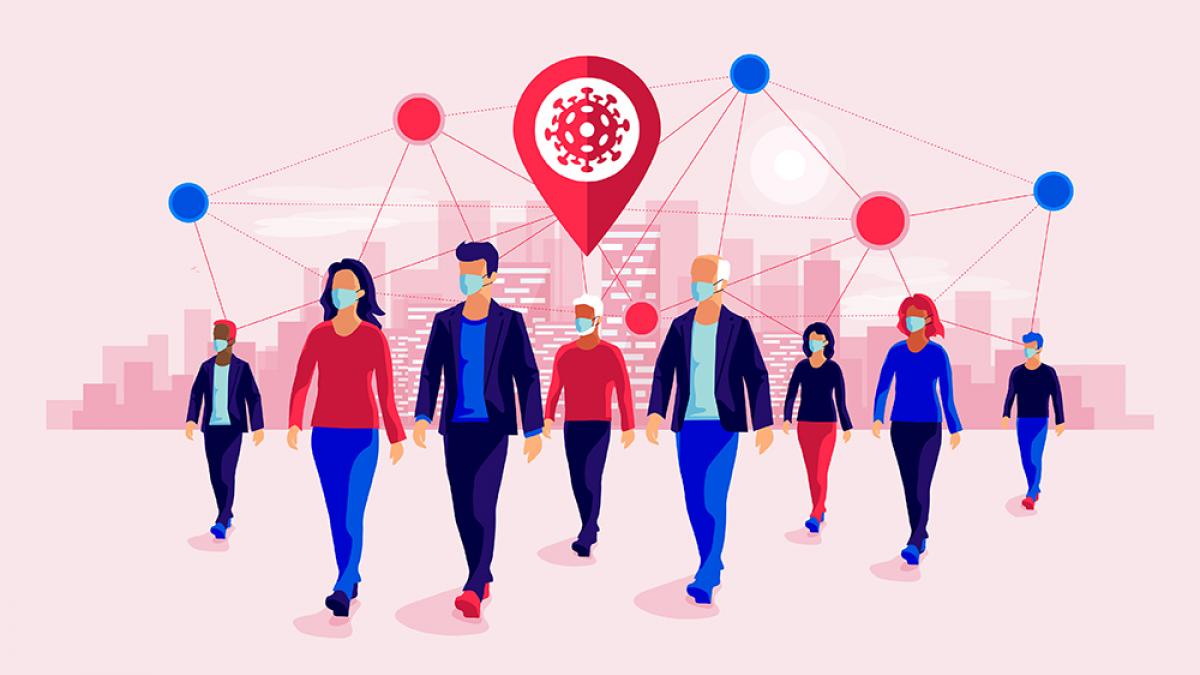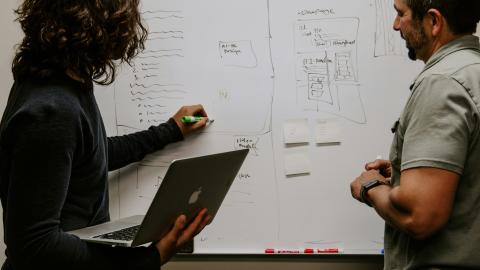
December 1, 2020
SARS-CoV-2, commonly known as COVID-19, is primarily spread from person to person through close contact. Isolating an infected person from others seems like a simple enough solution, but what do we do to slow the spread when essential workers are needed and symptoms can appear days or weeks after infection? This is where contact tracing comes to the rescue!
According to the CDC contact tracing, also referred to as contact investigation, is the identification, monitoring, and support of the individuals (contacts) who have been exposed to a COVID-19 patient and possibly infected themselves. This process prevents further transmission of disease by separating people who have (or may have) an infectious disease from people who do not.
Contact tracing is a proven and essential tool used to slow the spread of disease in states, cities, and even smaller communities like a college campus. As part of the ongoing public health efforts to mitigate the spread of COVID-19 UW Environmental Health and Safety has set up an internal contact tracing program to track COVID-19 cases within the UW community and suspected exposures to the virus. They also provide guidance for isolation and quarantine as well as cleaning and disinfecting potential exposure sites.
This system involves a centralized reporting center where employees, supervisors and students can contact EH&S to report symptoms or a positive test result. When a new case is reported, EH&S staff opens a new case to identify the potential risk of exposure to the new case among the rest of the UW community.
Telephone interviews are conducted with the individual to determine where, when and for how long the infected person was on campus, and to identify contact with other UW-affiliated personnel or other potential methods of spreading the virus.
The information collected during interviews is used to identify and notify individuals who were known to be within the vicinity of the individual during their infectious period. If needed, EH&S staff can also coordinate cleaning of the UW locations where the infected person spent more than 10 minutes. Infected persons and their potential contacts are interviewed several times for symptom assessment, testing results and management of self-isolation or quarantine periods until all involved have been cleared.
Occupational Medicine Resident, Dr. Anthony Norman, MSE, MD, MPHc, works weekly shifts working through the case/contact database to follow up on missing data, interviews, symptom reporting, testing information, and following up with infected persons and close contacts at the end of their isolation and quarantine periods. Dr. Norman also serves as a medical advice resource to individuals who may have come in contact with a known COVID patient and starts investigations following notification of potential new cases to EH&S.
“While all the interviews are conducted remotely, you still get the satisfaction of working with people to address their concerns and correct any misconceptions.” shares Dr. Norman. “This work generally helps reduce the impact the pandemic has upon the UW community through promotion of preventative approaches.”
The Occupational Medicine Residency is one of the longest-standing programs of its kind in the United States, and made possible by a partnership between the Northwest Center for Occupational Health and Safety and UW Medicine. To learn more about this unique residency program, click here to visit the OMR Residency information page.




